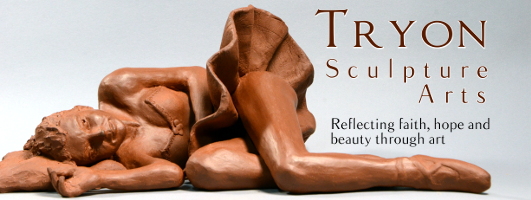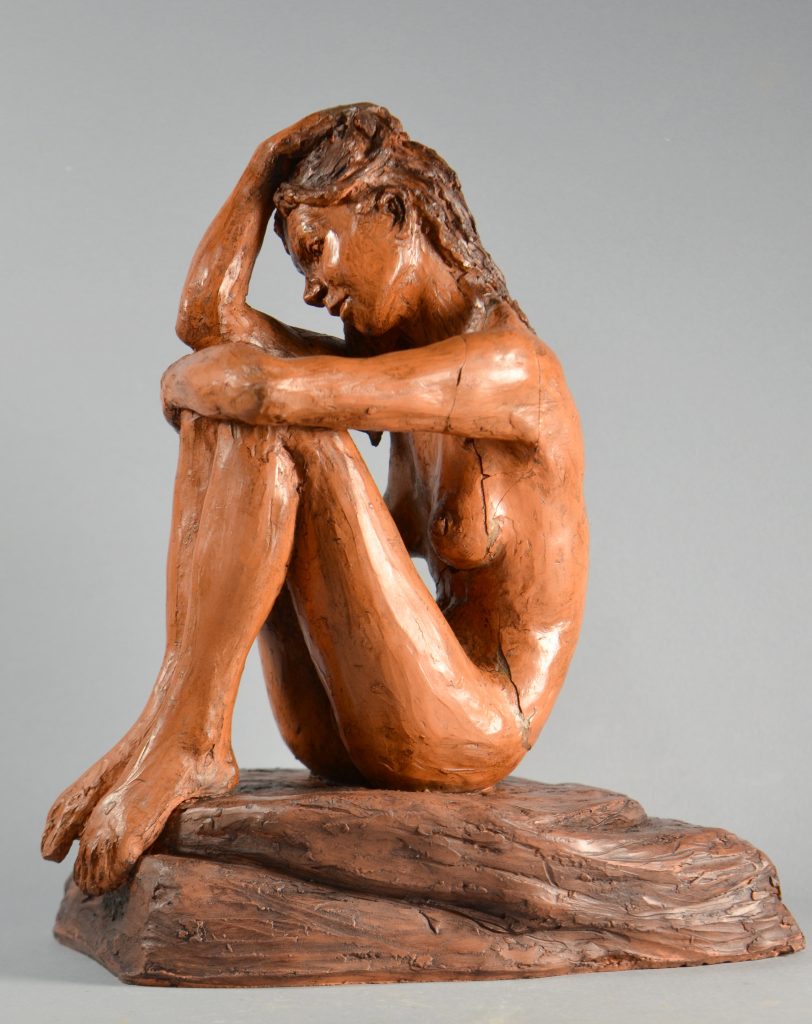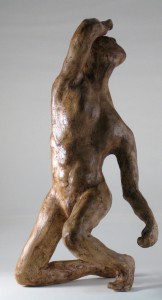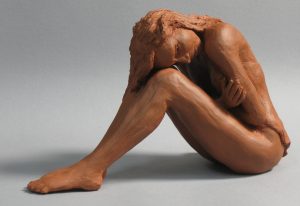Art reflects beauty. Not all art is appealing or pretty—in fact, sometimes the duty of the artist is to remind us that this world we live in is a broken place. However, art has a unique ability to shed light in dark places, to bring hope and joy, to help to us recognize beauty in the middle of the ugly and mundane. Art invites us to look beyond the stereotype (sunsets and flowers), and see beauty in the smallest blade of grass or the simple patterns of our lives.
Artists have always recognized the beauty and wonder of the human form. From the complexity of how our bodies are put together, to the simple shapes of a human face or shoulder; from the sparkle of a young child’s eyes and the supple flow of a trained dancer, or the simple dignity of an elderly gentleman sitting in on a park bench… the human form is beautiful.
In the figure, we find something we identify as a part of ourselves. I love the stories which figures tell, the uncertainty they find themselves trapped in, the joys they experience. Art becomes personally meaningful to us when we enter into it, when we find that the art “understands” us and our condition. We look at a figure and we see ourselves in a mirror.
In sculpture, the figure occupies a physical space, open to an infinite number of angles and changes in lighting. While the piece is static in its representation, it interacts with the viewer in a highly dynamic, constantly changing way as the viewer moves around the piece, or as the lighting changes.
As an artist, my goal is to create, through the figure, a reflection of the true beauty which exists deep within each of us.
The Nude
The human figure has been portrayed as nude throughout the history of art, and across cultures, though its depiction has remained controversial. When Michelangelo painted “The Last Judgment” behind the altar in the Sistine chapel, most of the figures there painted as nudes. In the 16th to 18th centuries, this troubled the sensibilities of the religious and political leadership, so painters were commissioned to add 38 different “modesty breeches” over some of the figures.
Shame has always been a part of the way we see ourselves. In the origin story of Adam and Eve in the Fall, they covered themselves with fig leaves when they stepped outside of who God had created them to be, and realized they were naked. We use clothing to hide how we feel about ourselves and our bodies, or to hide our defects or our weight. We use our clothing to align ourselves with images and ideals thrown at us through culture and the media.
Some argue that nudity (in art or otherwise) is inherently evil, based on the belief that such depictions serve only to stimulate our sexual desires. This brings up a deeply troubling lie — that males cannot control themselves or their sexual thoughts. One outcome of this belief is the lie of “modesty”, where girls and women are held responsible to dress in such a way as to not be “tempting” to males. This becomes toxic in the belief that, if a girl dresses in an “immodest” way, such as a short skirt or low dress, then it’s essentially her fault if she gets attacked or raped.
The nude figure cuts away this facade to reveal what is underneath. We are simply left with who we are.
Context
Every piece of art is created within a context of time and place, but it has the ability to step out of that context to speaks to us in our time and culture. At its best, art deals not only with the experience of a particular artist, or some specific time or event, but with the timeless reality of the human condition.
Clothing creates and enforces context. It symbolizes a person’s economic position, social status, time period, ethnicity, occupation, culture. The nude strips away that created context and leaves us with the human being and his reality. The emotions, the thoughts, the passion, the fear, are all that is left.
In the nude figure, a person is a person, not a king or a pauper or a husband or a wife. They simply are.
Vulnerability
The nude figure, either male or female, expresses vulnerability — stripping away our external defenses and our coping mechanisms. Vulnerability exposes our deeper self, the identity we have constructed around ourselves. In the figure, we see into the private emotions of the self, with all their complexity and brokenness.
Our pursuit of beauty can create an impossible ideal. Whether it is the photo-shopped curves of a fashion model or the massive hands and shoulders of Michelangelo’s “David”, we see a vision of who we wish we could be, how we wish other people would see us, believing the lie that we are only valuable if we can reach that illusory state of contrived beauty.



